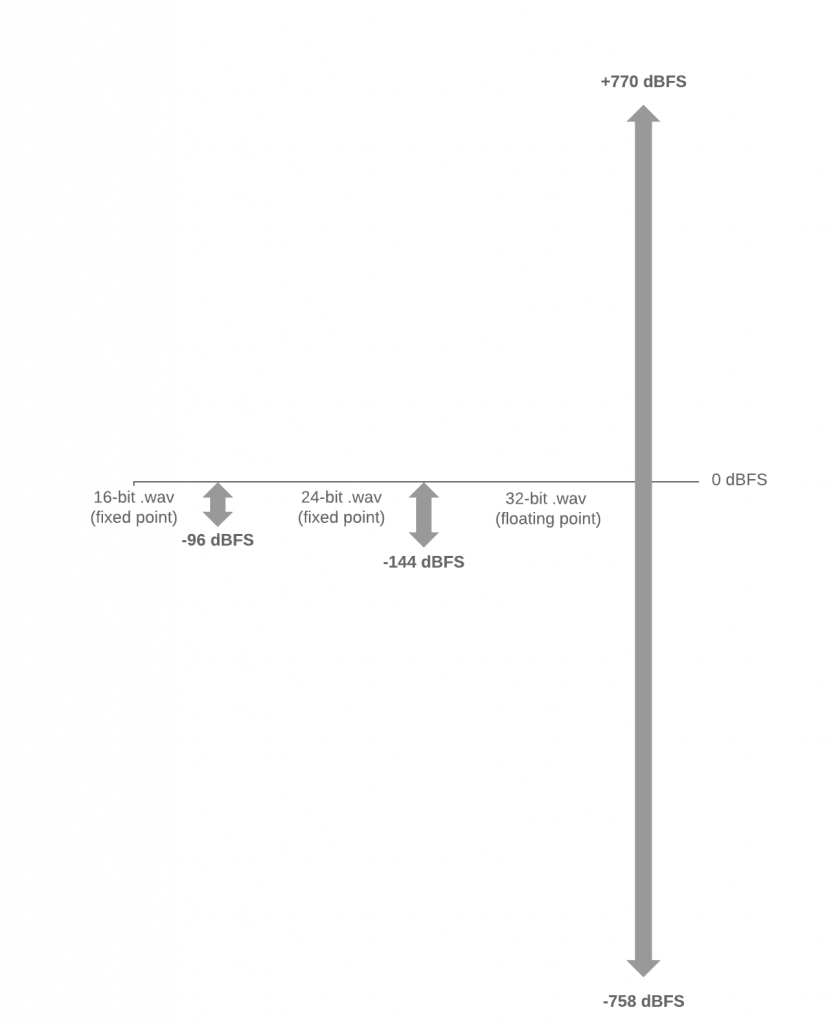32-Bit Float vs. a Compressor/Limiter
Many customers ask, “Why not use a compressor or limiter to capture higher dynamic range signals instead of using 32-bit float recording?” Though the comparison is that of two very different technologies–dynamics processing vs a recording system/format–the question is valid since both affect the dynamic range of a recording.
Compressor/Limiter
Compressors and limiters are indispensable tools for audio engineers. A compressor is a dynamics processor which reduces the dynamic range of an audio signal by altering its output level in relation to its input level. Compressors are used to make quieter parts louder, and louder parts quieter.
A typical compressor has adjustments for its ratio, anywhere from 1:1, which has no effect on dynamics, to infinity:1, which is considered hard limiting. Compression levels of 10:1 or higher are considered to be limiting. Compressors also have threshold level, attack time, and release time variables. By adjusting these various parameters, compressors can be used for artistic and intelligibility purposes, such as changing how a guitar ‘pops’ or sustains, or how a voice “sits” in a mix. Compressors are also used to control peak-to-average signal levels to increase the perceived loudness of a signal.
Fundamentally, compressors reduce the dynamic range of a signal. The compressor, by definition, distorts the incoming signal to squeeze a larger dynamic range into a smaller dynamic range. These distortions can be sonically desirable but they can introduce undesirable artifacts, such as noise pumping or low-frequency distortion. If an original recording is made using a compressor or limiter, these effects are ‘baked in’ to the file and cannot be easily reversed.
32-Bit Float Recording
By contrast, a 32-bit float recorder simply captures the entire dynamic range of the original signal, unaltered. There are no parameters to set, and nothing is baked into the original recording. The complete signal of the microphone is recorded.

Example Recording
Let’s consider recording dialog where the speaker is varying their subject-to-microphone distance from six feet to one foot and also going from a whisper to a scream. The signal level difference between these can easily exceed 100 dB of dynamic range. Let’s also assume that this is an application where the recordist cannot vary the gain once it is set.
Let’s record this signal in four different ways.
24-Bit Fixed Point, High Gain
Microphone preamp gain set to 60 dB. This is a good level to pick up the talker far away from the microphone, but when they get close and scream, they clip/overload the daylights out of the signal, and the recording is ruined.

24-Bit Fixed Point, Low Gain
Microphone preamp gain set to 20 dB. The gain level is set so that the signal does not overload when the talker screams into the microphone. For quiet signals away from the microphone the signal never gets above the inherent noise of the mic/preamp/recorder, and the recording may be unusable because it is too noisy.

24-Bit Fixed Point with Compressor/Limiter
Microphone preamp gain set to 60 dB, plus a limiter engaged, set to a 10:1 ratio. The quiet signal sounds good, and for the loud signal, the limiter reduces the gain so that the signal doesn’t overload. The recording is far better than above setups, but the limited portions sound flat, with exaggerated attack and noise pumping between screams.

32-Bit Float
Microphone preamp gain is set to 60 dB, or to 20 dB, or anywhere, it doesn’t matter. The recording is made, capturing all 100 dB of dynamic range with no distortion. When editing the signal after recording, the audio level can be adjusted up or down with no loss of fidelity. Additionally, if a compressor is appropriate to reduce the dynamic range in the mix, this decision can be made after recording.

Like any technology, 32-bit float recording is not the panacea for all recording ills. It is yet another tool which can be used by the recordist. Compressor/limiters are excellent tools and will always be used for many different reasons. For capturing the highest dynamic range recordings, 32-bit float recording is a very easy-to-use solution which can give excellent results.